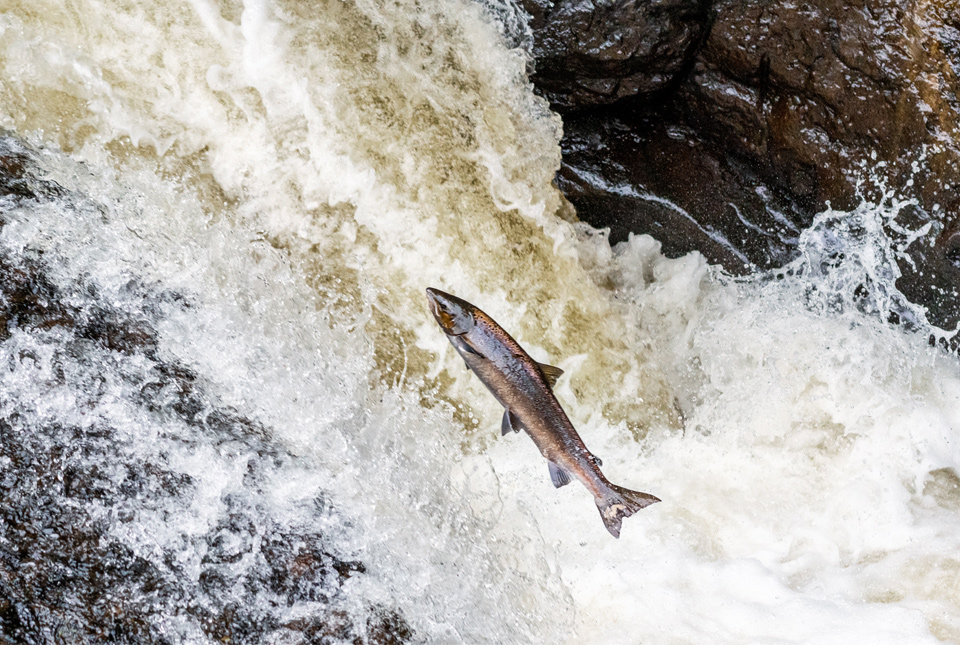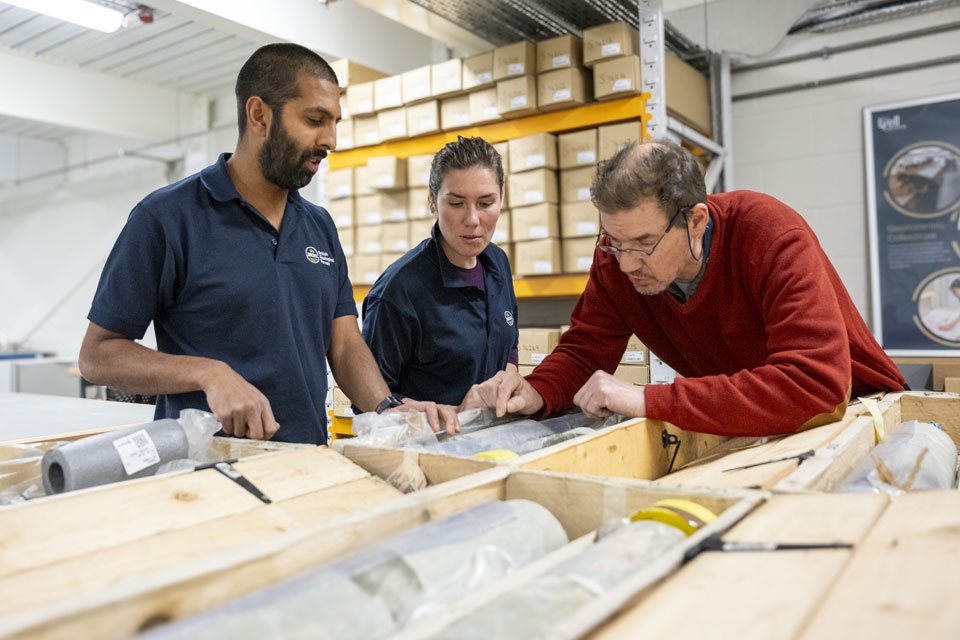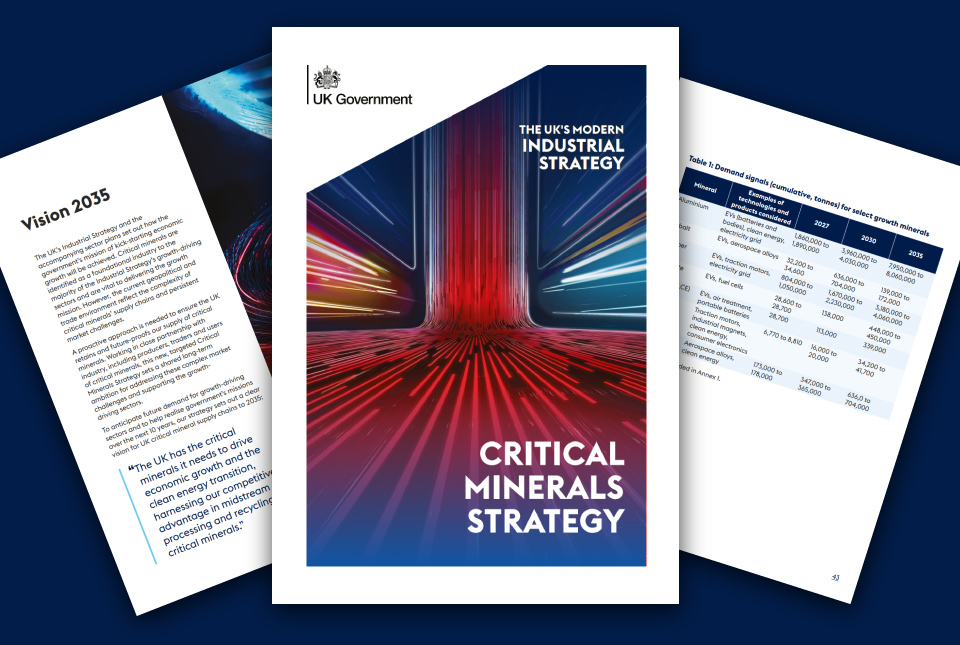Climate change and human exploitation linked to historic decline in Atlantic salmon
New research reveals that both a change in climate and human exploitation played a role in a decline in North Atlantic salmon populations.
08/06/2022 By BGS Press
New research has revealed that an abrupt change in climate conditions in the North Atlantic around 800 years ago played a role in a decline in Atlantic salmon populations returning to rivers. Human exploitation reduced their populations still further.
Using state-of-the-art geochemistry, a team of scientists has discovered that large-scale changes in the marine habitat, brought on by a transition from a warm to a cold climate and what is now known as the Little Ice Age (approximately 1300 to 1850 CE), corresponded with a decline in salmon in the River Spey, Scotland. The study, published in the international journal The Holocene, was led by the University of Southampton, working with BGS.
These results can help us understand some of the controls on salmon populations prior to and during major human exploitation.
Our study shows that historically, beavers – common in Scotland hundreds of years ago – do not appear to have significantly impacted salmon numbers. This is very relevant today, as the animals are being reintroduced to UK rivers and a debate continues about their potential impact on migratory species like salmon.
Prof David Sear, professor of geography and environmental science at the University of Southampton and lead author of the study.
This research benefited from state-of-the-art geochemistry which enabled us to fingerprint salmon abundance over hundreds of years. We show that climate has been an important influence of salmon numbers, which is very relevant today due to the speed of climate change.
Prof Melanie Leng, BGS, co-author.
Atlantic salmon lay their eggs in the gravels of headwater streams, where their young live for a year or two before migrating out to sea. Here, they feed and grow into adults, eventually returning to the river to spawn, where many then die. The sperm, eggs and carcasses are rich in marine nutrients, which can be detected in sediment hundreds of years later.
Using core samples from Loch Insh on the River Spey, the scientists collected and measured marine-derived nutrients (MDNs), which give an understanding of the historic population levels of salmon. The team also examined a 150-year record of net-catch data from the lower Spey to help calibrate the MDN record.
The scientists were able to construct a 2000-year record of both salmon-derived nutrients and variations in climate conditions.
The findings show:
- bigger salmon populations (inferred from changes in MDNs) in the past reduced during a cooling climate at around the same time humans began to exploit them, leading to a major decline in the fish over the last 800 years
- larger salmon populations in the past occurred at a time when rivers were also inhabited by beavers, which suggests migratory fish are capable of co-existing with beavers; this is an important concern of anglers around current beaver reintroductions
- migratory fish, such as salmon, bring marine nutrients into our nutrient-poor upland rivers and probably represented a major boost to aquatic and wetland ecosystems in the past, with a decline in nutrients negatively affecting these ecosystems today
It is the first study to use MDNs to measure Atlantic salmon, although the method has previously been used for Pacific salmon in north-west USA and Canada.
Relative topics
Related news

Scientists gain access to ‘once in a lifetime’ core from Great Glen Fault
01/12/2025
The geological core provides a cross-section through the UK’s largest fault zone, offering a rare insight into the formation of the Scottish Highlands.

New research shows artificial intelligence earthquake tools forecast aftershock risk in seconds
25/11/2025
Researchers from BGS and the universities of Edinburgh and Padua created the forecasting tools, which were trained on real earthquakes around the world.

BGS welcomes publication of the UK Critical Minerals Strategy
23/11/2025
A clear strategic vision for the UK is crucial to secure the country’s long-term critical mineral supply chains and drive forward the Government’s economic growth agenda.

New funding awarded for UK geological storage research
21/11/2025
A project that aims to investigate the UK’s subsurface resource to support net zero has been awarded funding and is due to begin its research.

UK braced for what could be the largest solar storm in over two decades
12/11/2025
Intense geomagnetic activity could disrupt technology such as communication systems, global positioning systems and satellite orbits.

First distributed acoustic sensing survey completed at UK Geoenergy Observatory
12/11/2025
New research at the Cheshire Observatory has shown the potential for mapping thermal changes in the subsurface using sound waves.

Latest BGS Geology 50K mapping data launched
06/11/2025
Some of our most widely used maps have received a major update, including the 1:50 000-scale map series that now includes enhanced coverage of Great Britain.

New research highlights significant earthquake potential in Indonesia’s capital city
04/11/2025
Research reveals that a fault cutting through the subsurface of Jakarta could generate a damaging earthquake of high magnitude.

World Cities Day: the geological story of our cities
31/10/2025
Understanding the rocks that underlie our towns and cities, the risks they can present and how they influence urban planning and redevelopment.

GSNI project wins multiple awards at RegioStars event
17/10/2025
The AGEO project enjoyed a double success at the RegioStars awards, hosted at the European Commission in Brussels.

Extended seabed geology map of the Bristol Channel published
07/10/2025
BGS has released significantly extended high-resolution maps that will support offshore green-energy initiatives in the area.

Dr Angela Lamb appointed as honorary professor by the University of Nottingham
02/10/2025
Dr Lamb will take up the position of honorary professor of environmental geochemistry, with a focus on collaborative research.



